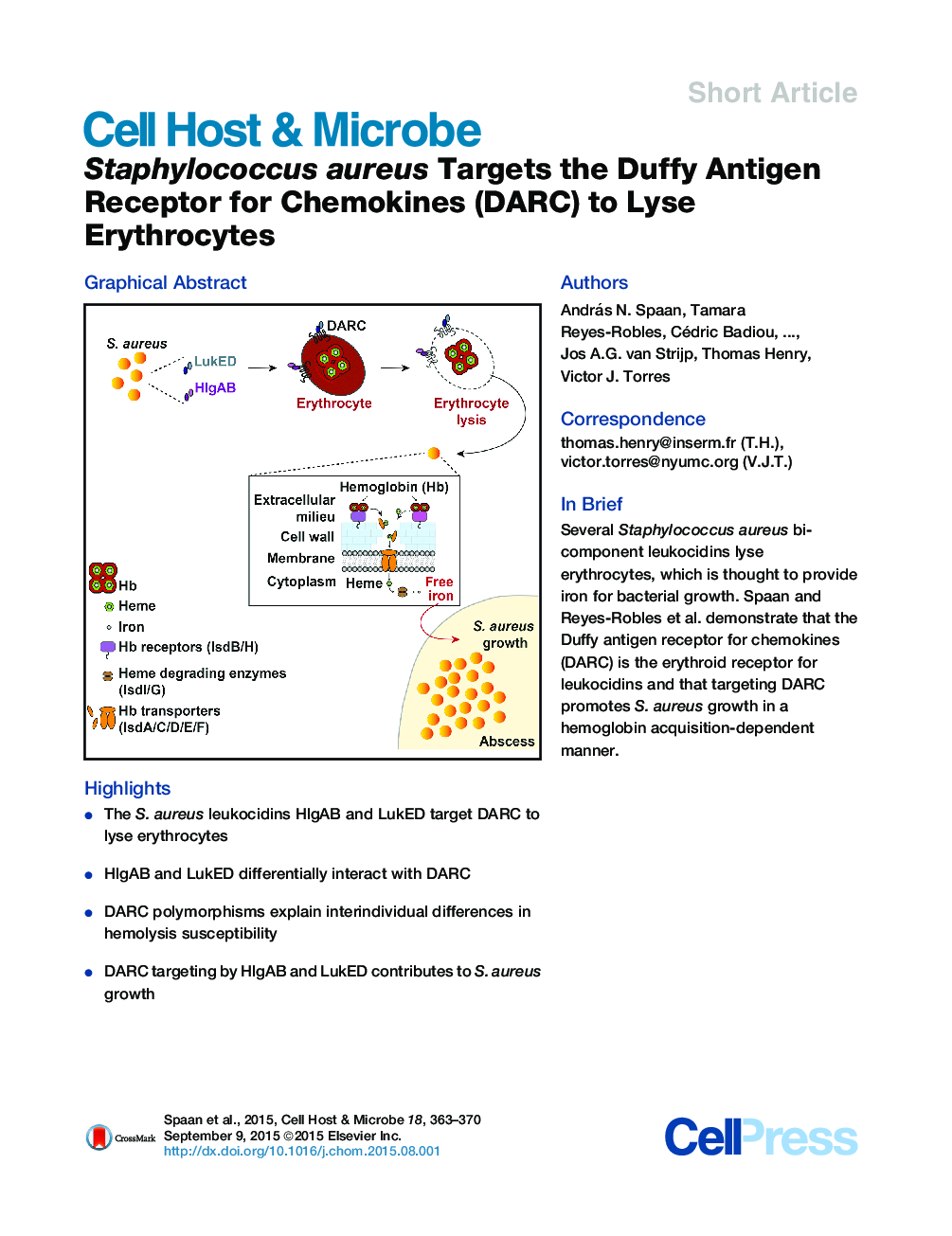| Article ID | Journal | Published Year | Pages | File Type |
|---|---|---|---|---|
| 4360834 | Cell Host & Microbe | 2015 | 8 Pages |
•The S. aureus leukocidins HlgAB and LukED target DARC to lyse erythrocytes•HlgAB and LukED differentially interact with DARC•DARC polymorphisms explain interindividual differences in hemolysis susceptibility•DARC targeting by HlgAB and LukED contributes to S. aureus growth
SummaryIn order for Staphylococcus aureus to thrive inside the mammalian host, the bacterium has to overcome iron scarcity. S. aureus is thought to produce toxins that lyse erythrocytes, releasing hemoglobin, the most abundant iron source in mammals. Here we identify the Duffy antigen receptor for chemokines (DARC) as the receptor for the S. aureus hemolytic leukocidins LukED and HlgAB. By assessing human erythrocytes with DARC polymorphisms, we determined that HlgAB- and LukED-mediated lysis directly relates to DARC expression. DARC is required for S. aureus-mediated lysis of human erythrocytes, and DARC overexpression is sufficient to render cells susceptible to toxin-mediated lysis. HlgA and LukE bind directly to DARC through different regions, and by targeting DARC, HlgAB and LukED support S. aureus growth in a hemoglobin-acquisition-dependent manner. These findings elucidate how S. aureus targets and lyses erythrocytes to release one of the scarcest nutrients within the mammalian host.
Graphical AbstractFigure optionsDownload full-size imageDownload high-quality image (213 K)Download as PowerPoint slide
